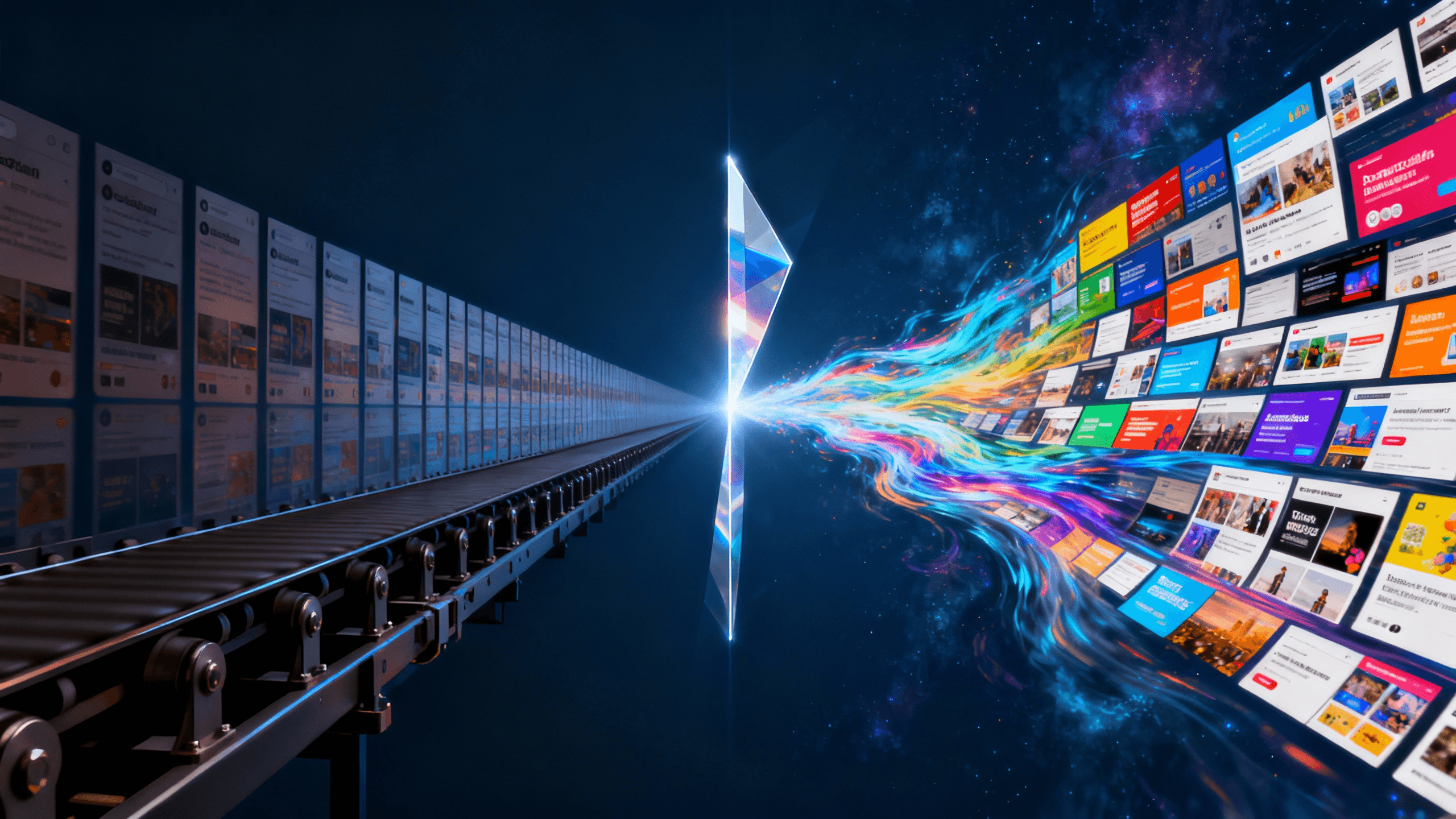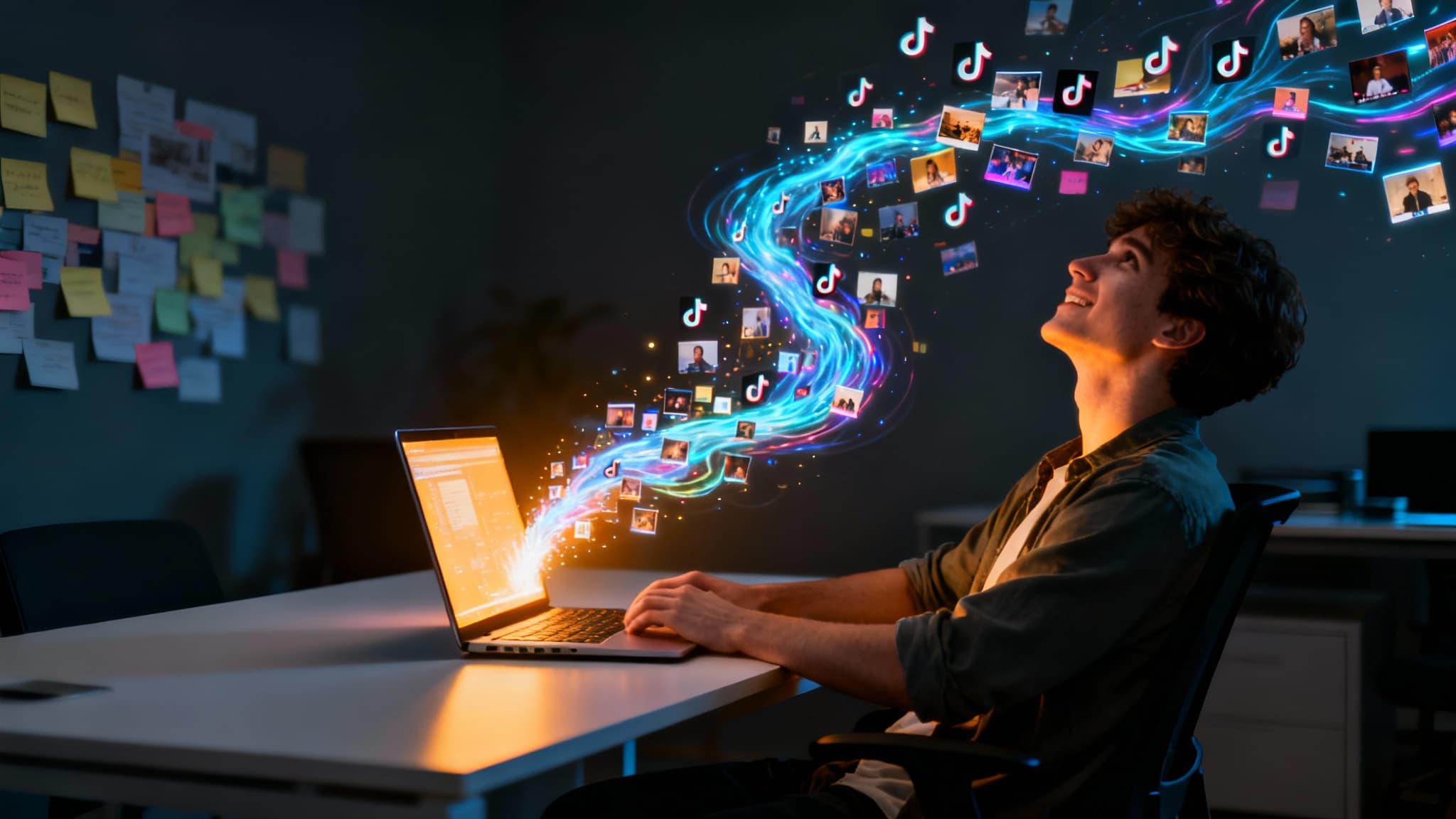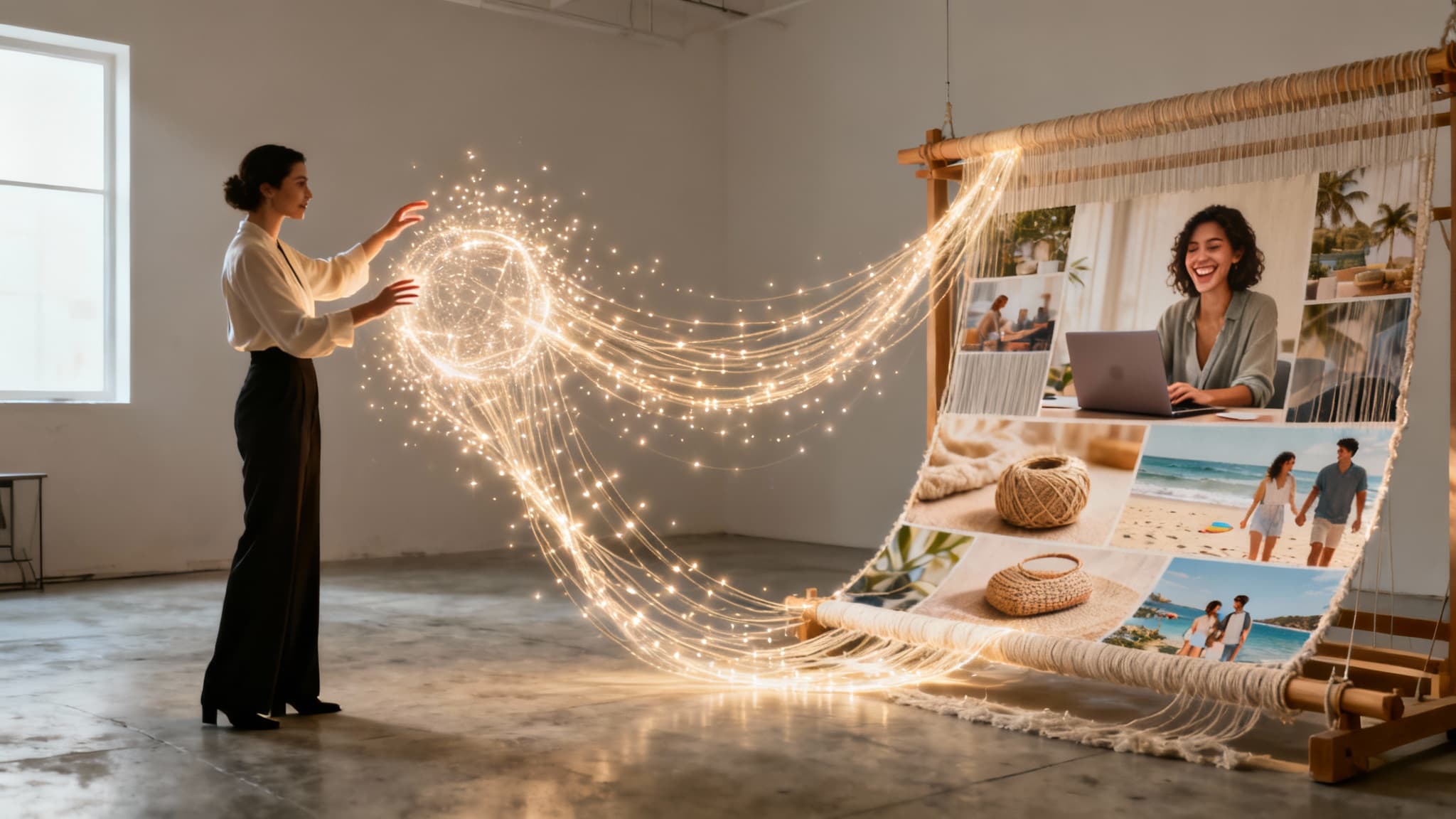Beyond the Photoshoot: The Manager’s Guide to Scaling E-commerce Visuals with AI
Shehroz
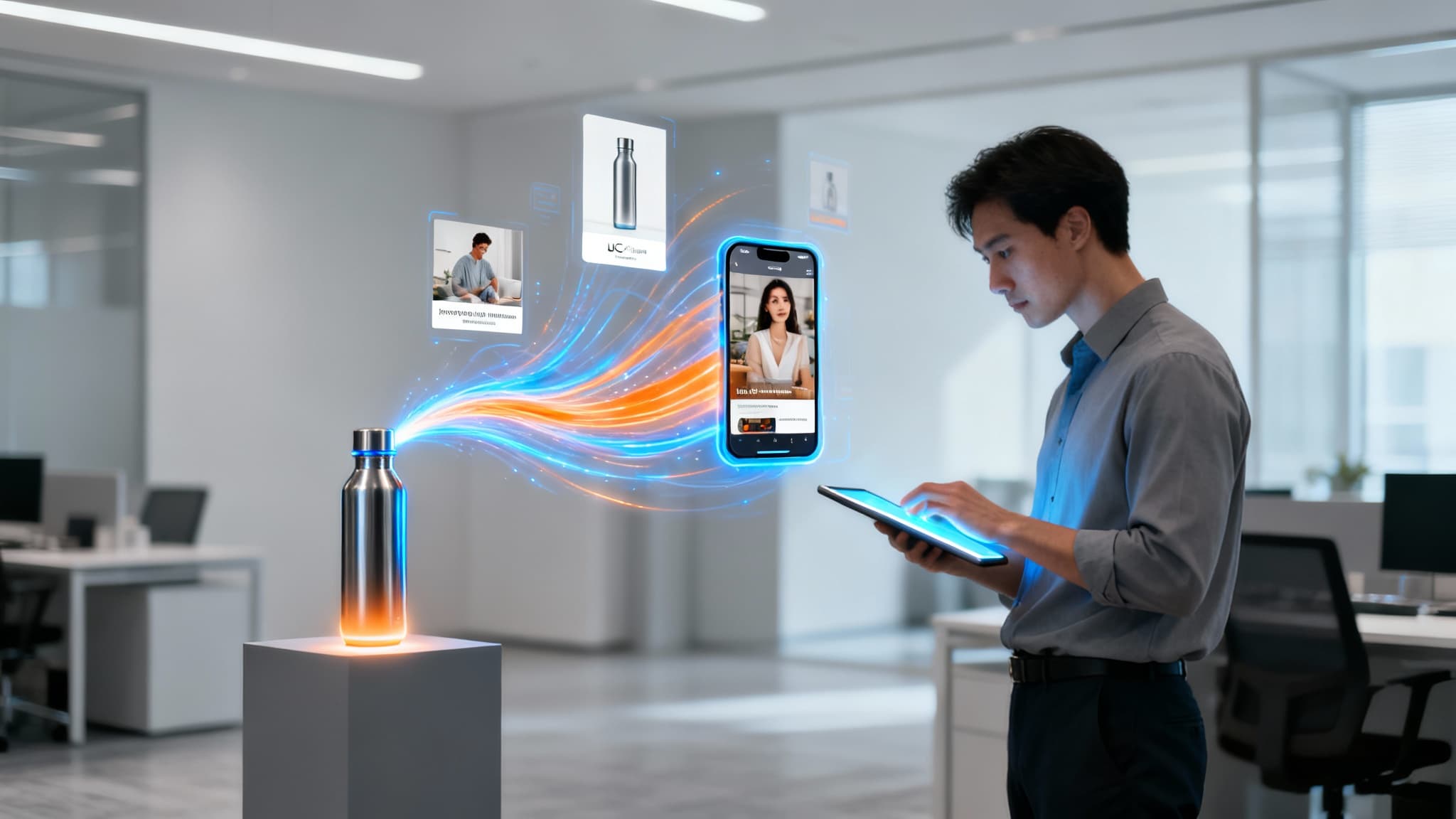
Beyond the Photoshoot: The Manager’s Guide to Scaling E-commerce Visuals with AI
You’re stuck on the content treadmill. Your performance marketing team needs new ad creative every week, your social channels are hungry for daily posts, and your product pages demand a dozen high-quality images to convert. The traditional photoshoot model is breaking under the strain, leaving you with budget overruns and missed opportunities. If you’re tired of the creative bottleneck, this guide is your way out. You’re about to learn how to fundamentally shift your production strategy from slow, expensive, one-off projects to a fluid, on-demand visual content engine, unlocking the secret to scaling e-commerce visuals with AI.
This isn’t about replacing creativity; it’s about amplifying it. We’ll break down the hidden costs of your current process and give you a new framework for building a scalable, AI-powered system that delivers better results in a fraction of the time.
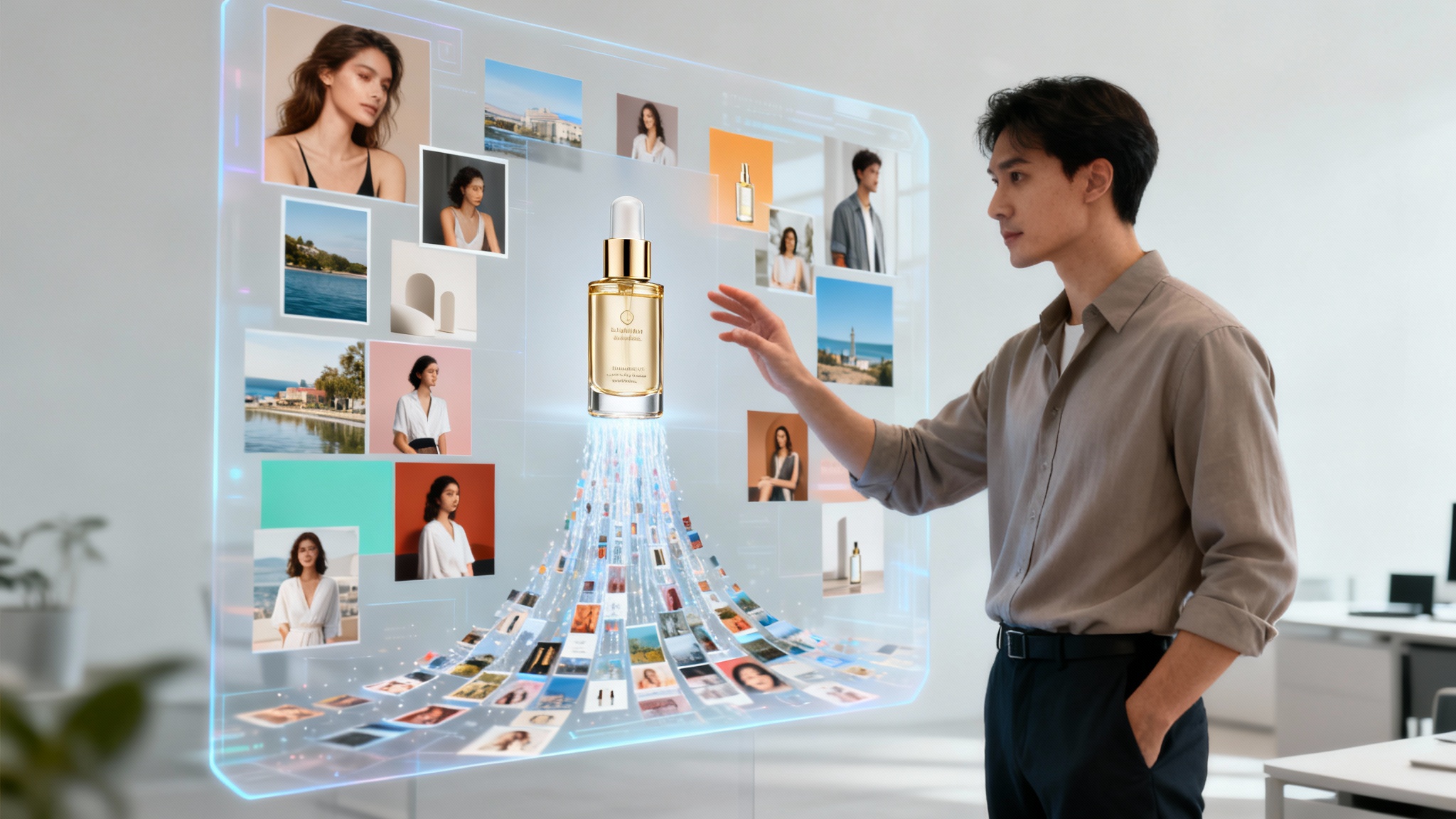
The Content Treadmill: Why E-commerce Brands Need More Visuals Than Ever
The modern e-commerce landscape is a visual battleground. Your brand isn’t just competing on product and price; you’re competing for attention on platforms that are overwhelmingly visual.
Consider the demand:
- Performance Marketing: A/B testing ad creative is no longer a luxury; it’s a necessity. Platforms like Meta and Google reward fresh, diverse creative, meaning your team needs a constant supply of variations to avoid ad fatigue and optimize ROAS.
- Social Commerce: From Instagram Stories to TikTok feeds, your audience expects a stream of authentic, engaging visual content. A single product shoot from three months ago simply won’t cut it.
- Product Detail Pages (PDPs): Customers now expect to see products in multiple contexts, on different models, and from every conceivable angle. A handful of static images on a white background is the bare minimum, not the gold standard.
- Personalization: The dream of showing the right visual to the right person at the right time is becoming a reality. But it requires a massive library of creative assets to pull from—something traditional methods can’t possibly supply.
This relentless demand creates a huge operational challenge. You’re forced to choose between quality, speed, and cost, and it often feels like you can only pick two.
The True Cost of a Single Product Shoot (It’s More Than Just Money)
When you approve the budget for a product shoot, the invoice you see is just the tip of the iceberg. The true cost is a combination of direct expenses, hidden fees, and, most importantly, lost time and agility.
Let’s break down the real investment:
- Direct Costs: This is the easy part—photographer fees, studio rental, model booking, stylists, equipment, and travel expenses. For a professional shoot, this can easily run into tens of thousands of dollars.
- Internal Time: Think of the hours your team spends planning logistics, writing creative briefs, sourcing props, managing contracts, attending the shoot, and overseeing post-production. This is valuable strategic time spent on tactical execution.
- Post-Production Delays: The shoot is just the beginning. Retouching, color correction, and formatting can take weeks, creating a significant delay between the shoot and having campaign-ready assets in hand.
- Opportunity Cost: This is the most painful cost. While you wait 6-8 weeks for your assets, a competitor has launched three new micro-campaigns. You missed a viral trend because you couldn’t produce relevant creative fast enough. The inability to be agile in a fast-moving market is a massive hidden expense.
When you add it all up, you’re not just paying for a few dozen photos. You’re paying a premium for a slow, inflexible process that struggles to meet the demands of modern marketing.
The Scalable Creative Brief: How to Plan for a Year of Visuals, Not Just One Campaign
The problem often starts before a single photo is taken: the creative brief. Traditional briefs are built for a single project—a specific campaign with a fixed outcome. To break the cycle, you need to think bigger.
A scalable creative brief focuses on building a visual system, not just a set of deliverables. It defines the core components of your brand’s visual identity that can be endlessly remixed and reconfigured.
Instead of briefing for “a summer campaign shoot,” you brief for:
- Core Product Angles: Define the 5-7 “hero” shots every product must have, regardless of the campaign.
- Brand Environments: Document the key settings and backgrounds that reflect your brand—is it a sun-drenched beach, a minimalist urban loft, or a cozy, rustic cabin?
- Audience Personas: Clearly define the models, styles, and demographics that represent your key customer segments.
- Emotional Tone: Codify the lighting, color palettes, and compositions that evoke the feelings you want associated with your brand (e.g., energetic, serene, luxurious).
By defining these systemic elements, you create a playbook that allows you to generate consistent, on-brand visuals for any campaign without starting from scratch every single time.
The Shift: From Physical Shoots to an AI-Powered Virtual Studio
This new, systemic approach to creative requires a new production model. The answer lies in shifting from sporadic, physical photoshoots to an always-on, AI-powered virtual studio.
Think of it like the shift from on-premise servers to cloud computing. Instead of owning and managing cumbersome physical infrastructure (studios, equipment), you access a powerful, flexible, and scalable resource on demand. This is the new frontier for scaling e-commerce visuals.
An AI virtual studio takes your core product images and, guided by your scalable creative brief, generates an infinite variety of new, original, and commercially-safe visual assets. It’s a system designed for the speed and volume of modern e-commerce.
Building Your Visual Content Engine: Components of an AI-Powered Production System
An effective AI-powered system isn’t just about a single tool; it’s a content engine with several key components working together:
- A Clean Asset Library: It starts with high-quality, foundational images of your products on a simple background. This is the raw material the AI will work with.
- A Brand “Model”: The AI needs to learn your aesthetic. This involves training it on your scalable brief—your environments, color palettes, and brand guidelines—to ensure every output feels authentic to you.
- Generative Scenarios: You need the ability to place your products into any scene imaginable. Want your skincare bottle on a marble countertop next to an orchid? Or your sneaker on a neon-lit street in Tokyo? You can generate it in seconds.
- Rapid Iteration Loop: The real power is speed. The system must allow you to generate dozens of variations, get feedback from your team, and produce finals for a campaign in a single afternoon, not over a quarter.
Benefit 1: Generate Infinite On-Brand Product Shots in Minutes, Not Months
Imagine your next product launch. Instead of one frantic, expensive shoot, you upload a single image of your new product. Within minutes, you have hundreds of lifestyle shots. You have it in a modern kitchen, by a pool, in a holiday-themed flat lay, and in a dozen other on-brand scenes.
This allows you to create customized visuals for every channel, every audience segment, and every A/B test without ever booking another studio. You can finally create enough content to feed the performance marketing beast.
Benefit 2: Create Authentic UGC-Style Videos On-Demand
The demand for authentic, short-form video is exploding, but producing it at scale is a logistical nightmare. Coordinating with dozens of creators, shipping products, and waiting for content is slow and unpredictable.
Modern AI generation platforms can now create original, realistic UGC-style videos. By using AI-generated avatars and scenes, you can produce dozens of video ads featuring different “creators” and settings, ready for your TikTok and Instagram campaigns, all without shipping a single product.
Benefit 3: Optimize Your Visuals for AI Search and E-E-A-T
The future of search is visual and AI-driven. Google’s Search Generative Experience (SGE) and commitment to E-E-A-T (Experience, Expertise, Authoritativeness, Trustworthiness) signal a major shift. High-quality, original, and contextually relevant imagery is becoming a crucial ranking factor.
Using AI to generate a wide array of unique visuals demonstrates experience—showing your product in diverse real-world situations. This builds trust with both algorithms and customers, proving that you have a deep understanding of how your product fits into your customer’s life. A sparse image library will soon be a significant SEO liability.
How to Choose the Right AI Content Generation Platform for Your Brand
As you explore this new technology, it’s crucial to choose a partner that understands the needs of a professional brand. Not all AI tools are created equal. Here’s what to look for:
- Brand Consistency Controls: The platform must give you fine-grained control over your brand’s aesthetic. Can you lock in specific colors, lighting styles, and compositions?
- Commercial Viability: Ensure the platform generates 100% original, commercially-safe assets. You need a guarantee that you have the full rights to use every image and video in your advertising.
- Ease of Use: The tool should empower your marketing team, not require a team of AI technicians to operate. It should be intuitive and workflow-friendly.
- Scalability and Quality: Look for a platform that can produce high-resolution images and videos suitable for all your channels, from web banners to paid social ads.
The era of being constrained by the physical photoshoot is over. By embracing an AI-powered approach, you can finally move at the speed of culture, feed your marketing channels with an endless supply of creative, and gain a powerful competitive edge.
If you’re ready to stop planning shoots and start building a true content engine, exploring a virtual photography platform is your next logical step. Solutions like Slaptastic are specifically designed to help e-commerce and brand managers break free from the content treadmill and start creating stunning, on-brand visuals at scale.
